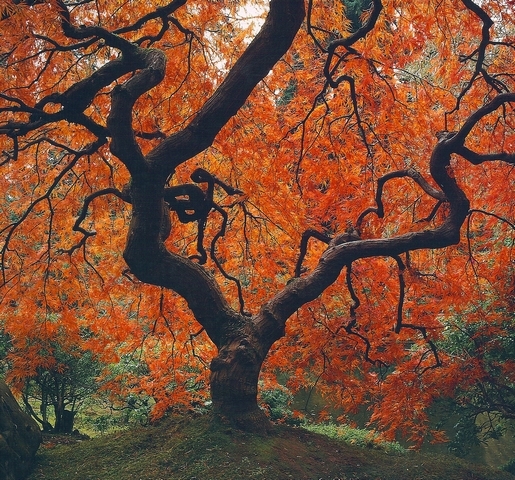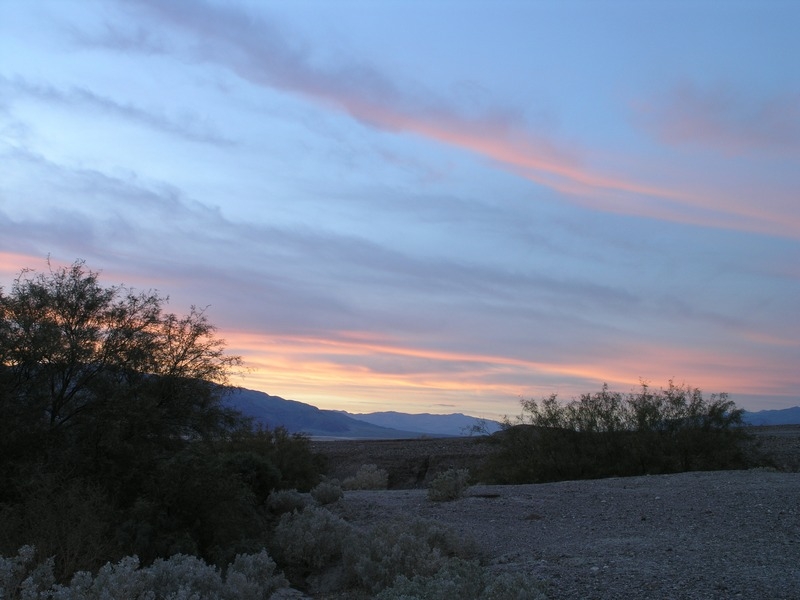If the foliage on your Japanese maple recently dried up before turning color or during the process, the following question I recently received may be of interest to you. The reader was concerned because he had had some dieback in early spring while his maple was leaving out. So when his tree fritzed this month he thought the tree might be having more fungal problems.
 Leaves change color when they are going into winter dormancy. When nights get long enough, leaves develop a corky layer of cells between the leaf stalk and the woody part of the tree. This slows the transport of water and carbohydrates. The manufacture of chlorophyll is slowed and the green color of the leaves begins to fade, allowing the other pigments to show through. Since the transport of water is slowed down, food manufactured by the remaining chlorophyll builds up in the sap of the leaf and other pigments are formed which cause the leaves to turn red or purple in color, depending on the acidity of the sap.
Leaves change color when they are going into winter dormancy. When nights get long enough, leaves develop a corky layer of cells between the leaf stalk and the woody part of the tree. This slows the transport of water and carbohydrates. The manufacture of chlorophyll is slowed and the green color of the leaves begins to fade, allowing the other pigments to show through. Since the transport of water is slowed down, food manufactured by the remaining chlorophyll builds up in the sap of the leaf and other pigments are formed which cause the leaves to turn red or purple in color, depending on the acidity of the sap.
For example, sumacs and California wild grape almost always turn red because red pigments are present and their leaf sap is acidic, While many of the oak and sometimes ashes will get a purplish color because the sap is less acidic. Trees like birch don’t have much orange pigment, so they appear mostly yellow in the fall. Others don’t have much yellow pigment, and turn mostly orange or read. Some trees have a balance of pigments and look pinkish. The brown color or many oaks can be attributed to a buildup of tannins which is a waste product in the leaves.
Getting back to that poor Japanese maple with the dried up leaves, the whole process of fall coloring can be disrupted by wind and rain coming at the wrong time. Japanese maples have a more delicate leaf than some of other trees and are more susceptible to the elements of nature at this time. Rain and wind during the display will put a quick end to the autumnal display. The good news is that your maple will be just fine next year.

 After returning, I’m struck with the lushness of our subtropical home. You probably get this same feeling when you get back from a vacation. We live in paradise. Whether you live in oak woodlands, chaparral, or a redwood / mixed evergreen forest we are blessed to live here. We are thankful for our neighbors and community, our flora and fauna, our wonderful climate and our gardens. I came across this poem of Thanksgiving and thought you might like it, too.
After returning, I’m struck with the lushness of our subtropical home. You probably get this same feeling when you get back from a vacation. We live in paradise. Whether you live in oak woodlands, chaparral, or a redwood / mixed evergreen forest we are blessed to live here. We are thankful for our neighbors and community, our flora and fauna, our wonderful climate and our gardens. I came across this poem of Thanksgiving and thought you might like it, too.